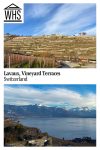Lavaux, Vineyard Terraces
By Laura
What is Lavaux, Vineyard Terraces?
Lavaux is a wine region outside Lausanne, Switzerland, that is unique due to the terraced walls along the foothills of the mountains that hold the vineyards. It is thought that these vineyards were created by monks in the 12th century and have been maintained since then. The vineyards now cover more than 30 kilometers (19 miles) along the northern shore of Lake Geneva and are home to more than 300 wines, including the chasselas, a white wine of the region.
Disclosure: This article contains affiliate links. Making a purchase through an affiliate link will mean a small commission for this website. This will not affect your price.
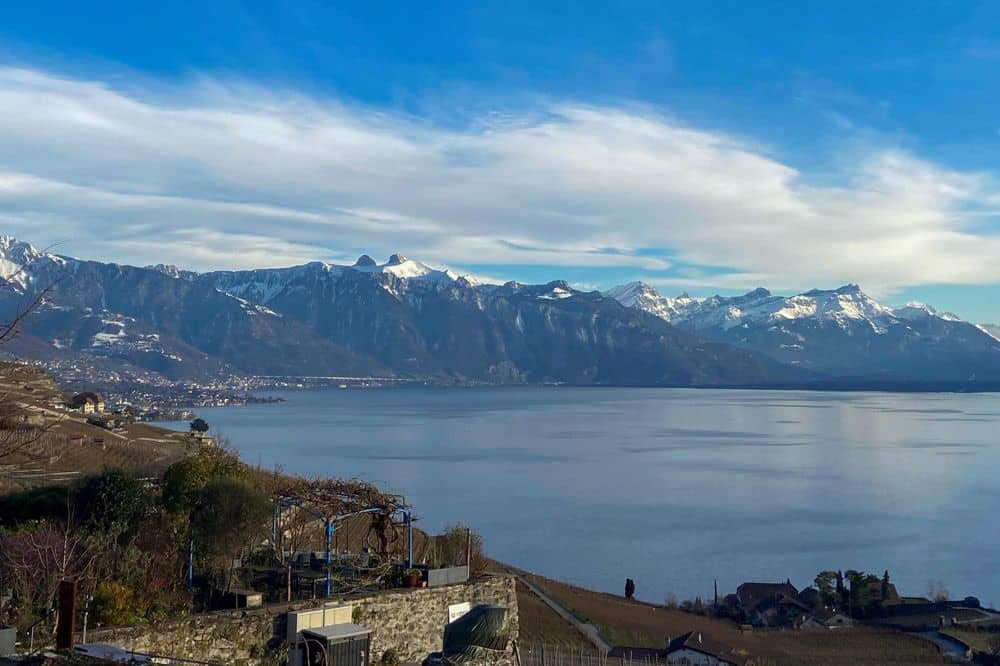
This area along Lake Geneva benefits from the “three suns” – the light from the sun, the reflection of the sun on the waters of Lake Geneva, and the heat stored in the stone walls of the terraces themselves.
Why is Lavaux a UNESCO World Heritage site?
Lavaux was added to the UNESCO World Heritage list in 2007. According to UNESCO, “It is an outstanding example of a centuries-long interaction between people and their environment, developed to optimize local resources so as to produce a highly valued wine that has always been important to the economy.”
The listing not only includes the 4000+ acres of land Lavaux sits on, but also all of the steps of the wine growing process, which makes this area so unique. Many of the wineries today are still family-owned. The UNESCO listing means that the families honor the traditional techniques of wine making and the local traditions.
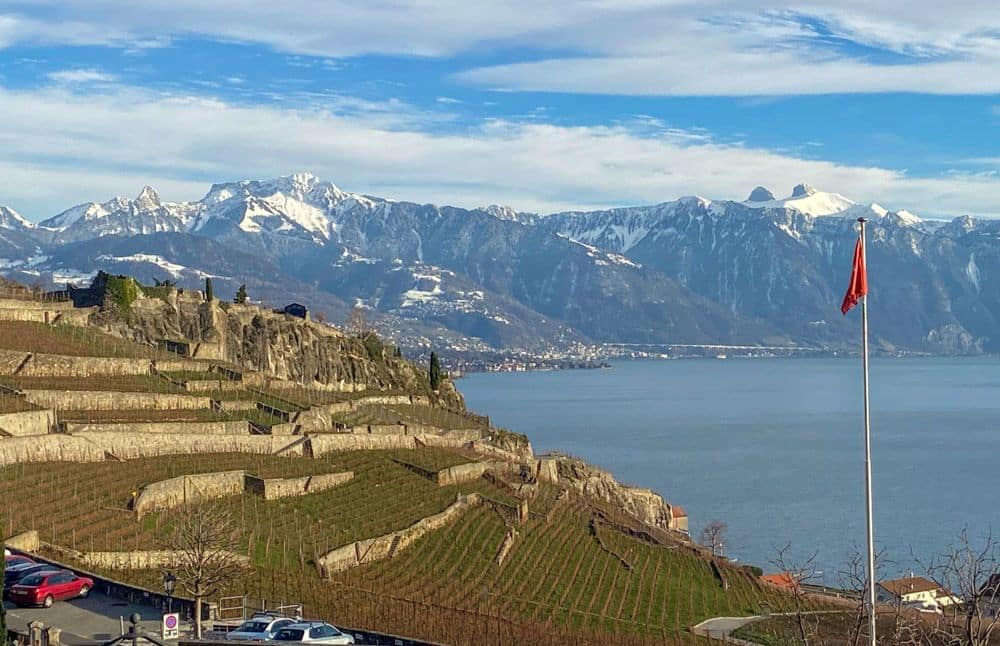
What can you expect on a visit to Lavaux, Vineyard Terraces?
Your visit to Lavaux will include stunning views of both the Alps and Lake Geneva (Lac Léman), world-class wine, delicious meals, and hiking trails. It will also depend on the season in which you visit.
In the summer, many wineries will be open for tastings of both red and white wines. Visitors can reserve guided tours of the wineries and other special experiences. The restaurants in the area are known for their food, including several Michelin Selected or Bib Gourmand restaurants.
In the winter, you can still enjoy a walk among the terraces, but far fewer of the wineries will be open. Many close after the grape harvest in October, and remain closed through the winter. The Vinorama tasting room has wines from throughout the region available for tasting and purchase. I stopped here and learned a great deal from the sommeliers about the region.
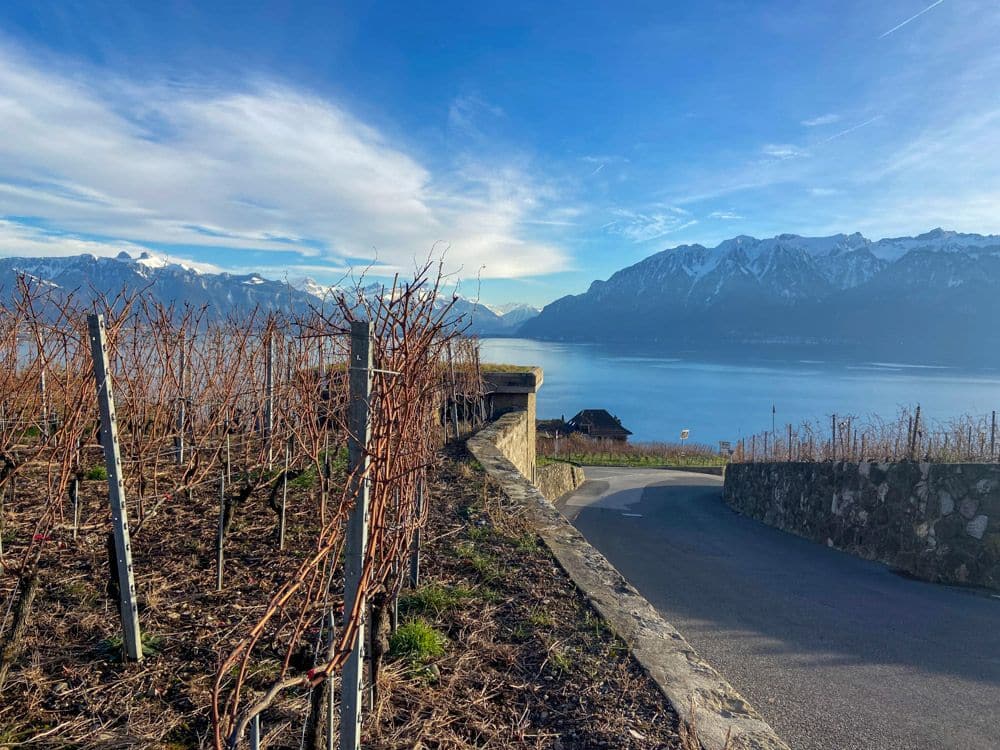
Is Lavaux worth visiting?
The Lavaux vineyards are absolutely worth visiting for a day or more. With one day, you can take a train from Geneva, Lausanne or Montreux and walk among the vineyards to stop at one or two for tastings. WIth more days, you can hike for several hours up into the foothills of the terraces, or along the shore, to really absorb the beauty of the area.
Compare hotels in Geneva, Lausanne or Montreux, or use the map below to find accommodations right in the Lavaux region.
I visited in the winter, and was able to do a tasting at the Vinorama tasting room. Many wineries were closed. Nevertheless, we were able to enjoy a sunny afternoon walking along the roads of Lavaux for a few hours. I am planning a return trip in the summer to be able to enjoy even more of the wineries and hiking.
What sorts of travelers would like Lavaux, Vineyard Terraces?
The Lavaux terraced vineyards will entice travelers who like to walk, drink wine, or take in spectacular views of the mountains and lake. I was excited to visit the terraced vineyards to see the history of the area in action, and try the local white wine, the chasselas wine. The experience of walking around the vineyards on a beautifully sunshiny afternoon was second to none.
Tips for visiting Lavaux
The two main activities for visiting the Lavaux terraced vineyards are walking (or hiking) and drinking wine. Wear comfortable shoes for the first activity, as you will be walking up and down the hills to reach the vineyards. I did not realize how much hiking there would be, and I should have worn more comfortable sneakers, and brought sunblock!
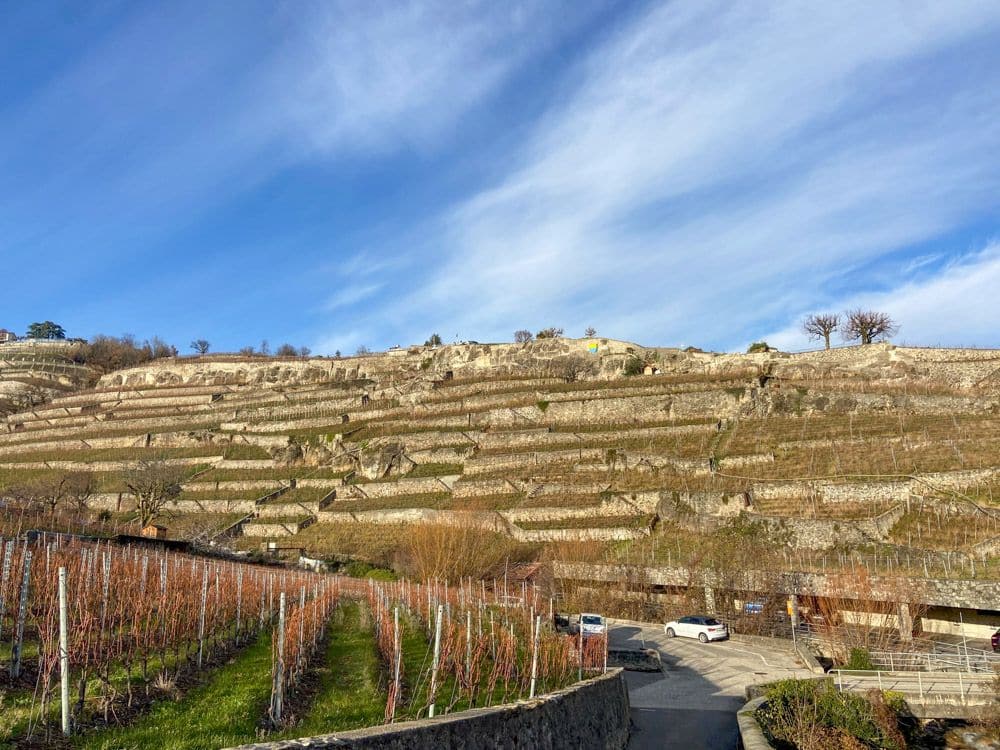
For the second activity, I recommend calling wineries ahead of time to make sure they are open. If they are, schedule a tasting. I visited several in December, and even though their websites said the wineries were open, they actually were not. Most close down after the October harvest for the winter.
While you can find many pre-planned hikes throughout Lavaux online, you can also just … start walking! You won’t get incredibly lost, since you will always be able to see the lake on the south side of the trail. No matter where you end up, you will not be far from a bus or train station. Let your feet and the wine guide you!
If you’re not up for hiking on hills, take a 2-hour cruise on Lake Geneva. You’ll get beautiful views of the Lavaux vineyards.
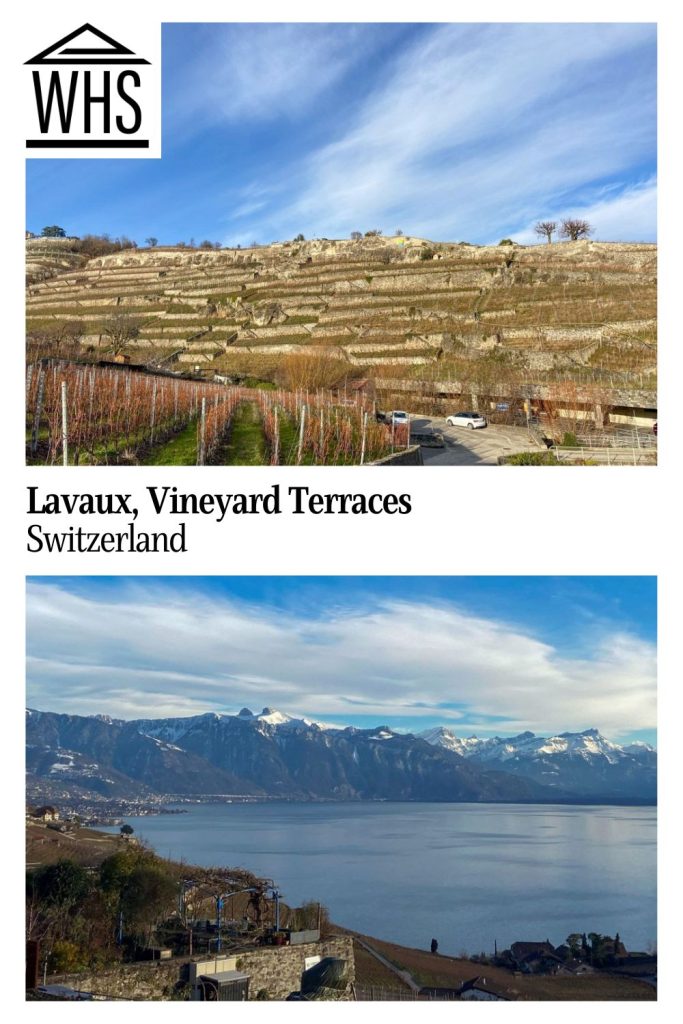
Where is Lavaux?
The Lavaux terraced vineyards are located in the Vaud canton of Switzerland, just outside Lausanne on the northern edge of Lake Geneva (called Lac Léman locally). The vineyards cover 30 kilometers (19 miles) along the lake, including several small lakeside towns and villages.
The vineyards protected by the UNESCO World Heritage listing are between the Lutry Valley and the Vevey Valley along Lake Geneva. The area covers ten communities: Lutry, Bourg-en-Lavaux (Cully, Epesses, Grandvaux, Riex and Villette), Chexbres, Puidoux, Rivaz, Saint-Saphorin, Chardonne, Corseaux, Corsier-sur-Vevey and Jongny. Each of these villages has several wineries and tasting rooms among its terraces. I visited Vinorama near Cully by train, and several nearby in Rivaz by walking up the hill before taking a bus back.
Lavaux vineyards can be reached from Lausanne easily:
By car: It’s a 20-45 minute drive from Lausanne, depending on the vineyard. Most vineyards or tasting rooms have parking or you can take a cab, Uber or Lyft. Large public lots are available at Cully, Lutry, Vinorama, Chexbres or Vevey. Some vineyards may be reached via narrow winding roads, so take caution while driving. It is illegal to drive intoxicated in Switzerland, so do not drink and drive. Choose a designated driver before you set off, or else opt for public transportation. Compare rental car prices here.
By public transportation: You can reach the vineyards by multiple forms of public transportation, including boat, train, bus and funicular. It’s also easily bikeable from many of the villages. Bus and train are the most popular.
- Train is the most efficient. S2 and S3 trains stop along the lake, taking 15-45 minutes from Lausanne, with several per hour.
- Buses cover the distance along the lake and into the hills and take slightly longer: 30-60 minutes from Lausanne.
If you’re going to be traveling a lot in Switzerland, it might be worth getting a Swiss Rail Pass. It includes public transportation (train, bus, boats and sometimes cable cars) everywhere in the country. It also offers free admission to hundreds of museums and discounts for rides up to mountain peaks. Swiss public transportation is impressively efficient; download the SBB app to make your plans.
For more information about Lavaux, Vineyard Terraces, its opening hours and admission fees, see its official website (in French; use Google Translate).
Have you been to the Lavaux terraced vineyards? If so, do you have any additional information or advice about this UNESCO World Heritage site? Please add your comments below!

